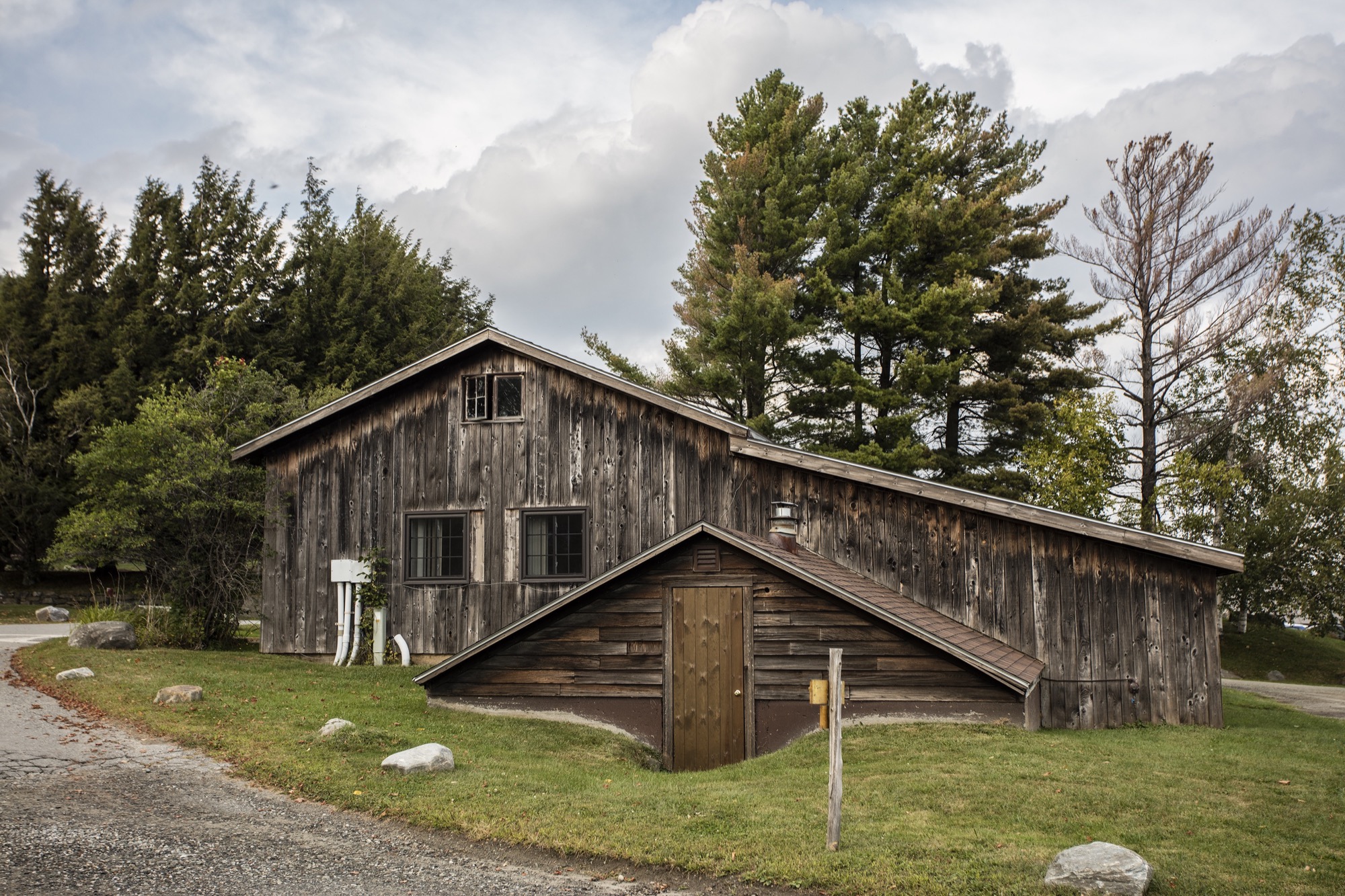
Inspirations
Explore the elevated life in the mountains. This content debuted in 2015 with Alpine Modern’s printed quarterly magazine project.
Waking Up to Adventure
Zack Giffin, professional freeskier and cohost of the television series Tiny House Nation, builds himself a mobile 112-square-foot (10-square-meter) ski-in, ski-out chalet so winsome it wipes out the ski bum stigma.
Zack Giffin, professional freeskier and cohost of the television series Tiny House Nation, builds himself a mobile 112-square-foot (10-square-meter) ski-in, ski-out chalet so winsome it wipes out the ski bum stigma.
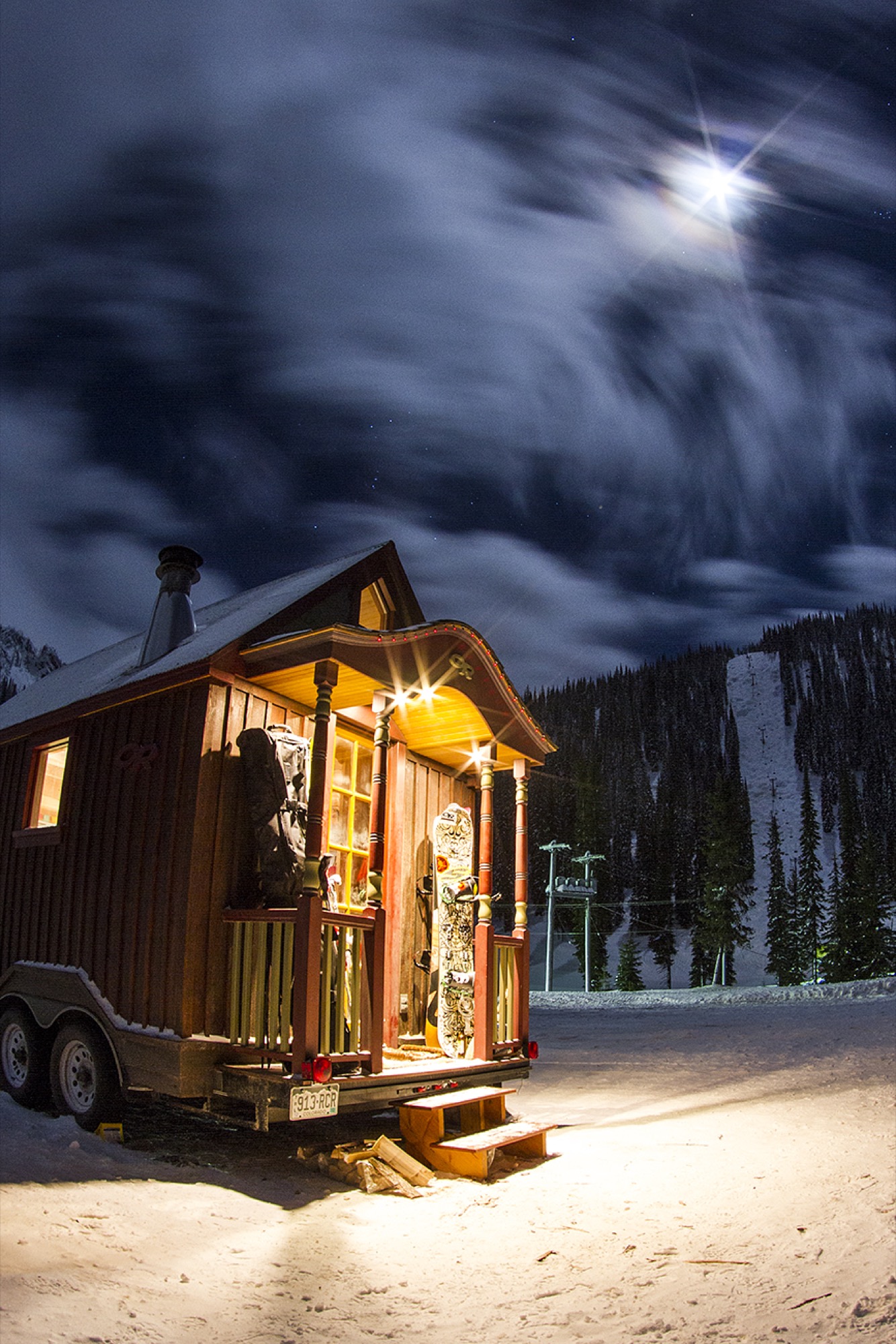
“My love for the mountains comes from my family. My whole identity was to be that mountain kid,” Zack Giffin says about growing up in Gold Hill, Colorado. His parents had moved to the tiny mountain community ten miles above Boulder to raise their three sons (Zack is the middle child) to revere the outdoors as much as they did. His mother, a university professor, was an avid backpacker. His father, a ceramics artist and prolific inventor, was a fisherman and a rock climber.
The parents’ plan worked. Giffin blossomed into a professional skier, hungry for adventure and romantic evenings in the mountains.
Young Giffin embraced another passion of his father’s: working with wood. Like Giffin Senior, Zack is not a carpenter by trade. Nevertheless, “My dad instilled in me that you can make things yourself, and that you are the only one you can really rely on.”
That paternal sagacity resonates with Giffin whether he builds tiny houses or is about to drop down the face of a glacier. “The development in both those areas is in learning how to believe in yourself, to trust you’re making the right call.” He’s had mentors on the snow and in the shop, but he, like everyone, came to a point when there was no one to reference. “When you are on your own, that’s when a lot of growing up happens.”
“My dad instilled in me that you can make things yourself, and that you are the only one you can really rely on.”

Alone
The tragedy that changed Giffin’s life in an instant happened neither on the big mountain nor on television. It happened in the home he shared with a roommate in Boulder. It forever altered what home meant to him. “I had a gnarly incident with a friend,” Giffin reveals, his voice suddenly somber. The young man who had been like a little brother to Giffin, accidentally shot himself to death. “It was pretty dramatic. I was in the house, and all of a sudden I no longer felt the security of home in that space.”
He no longer wanted to live there. “It was this catalyst in my life for making a change. There was sadness, and I really wanted to pursue my dream of being a skier.” All at once grasping life’s preciousness, Giffin bought an RV and persuaded his little brother to move to Mount Baker, Washington—a place he was “absolutely in love with” at the time. “That was a big shift, and I experienced a lot of stigmatism.” He’s talking about being perceived as “the guy who lives in an RV.” No soul asked him about his motivation to uproot and chase his dream. The following winter, Giffin pushed himself yet nearer the fringe of venal bourgeoisie. He moved into a van that he outfitted with a wood stove.
Boyfriend material
Then, he fell in love with fellow snow gypsy Molly Baker, who is also a professional skier. “She was so cool and totally would have done it, but I had experienced that stigma and couldn’t bring her into that world with a good conscience,” he admits. “No girl wants to go back to her parents and explain that her new boyfriend actually lives in a van.”
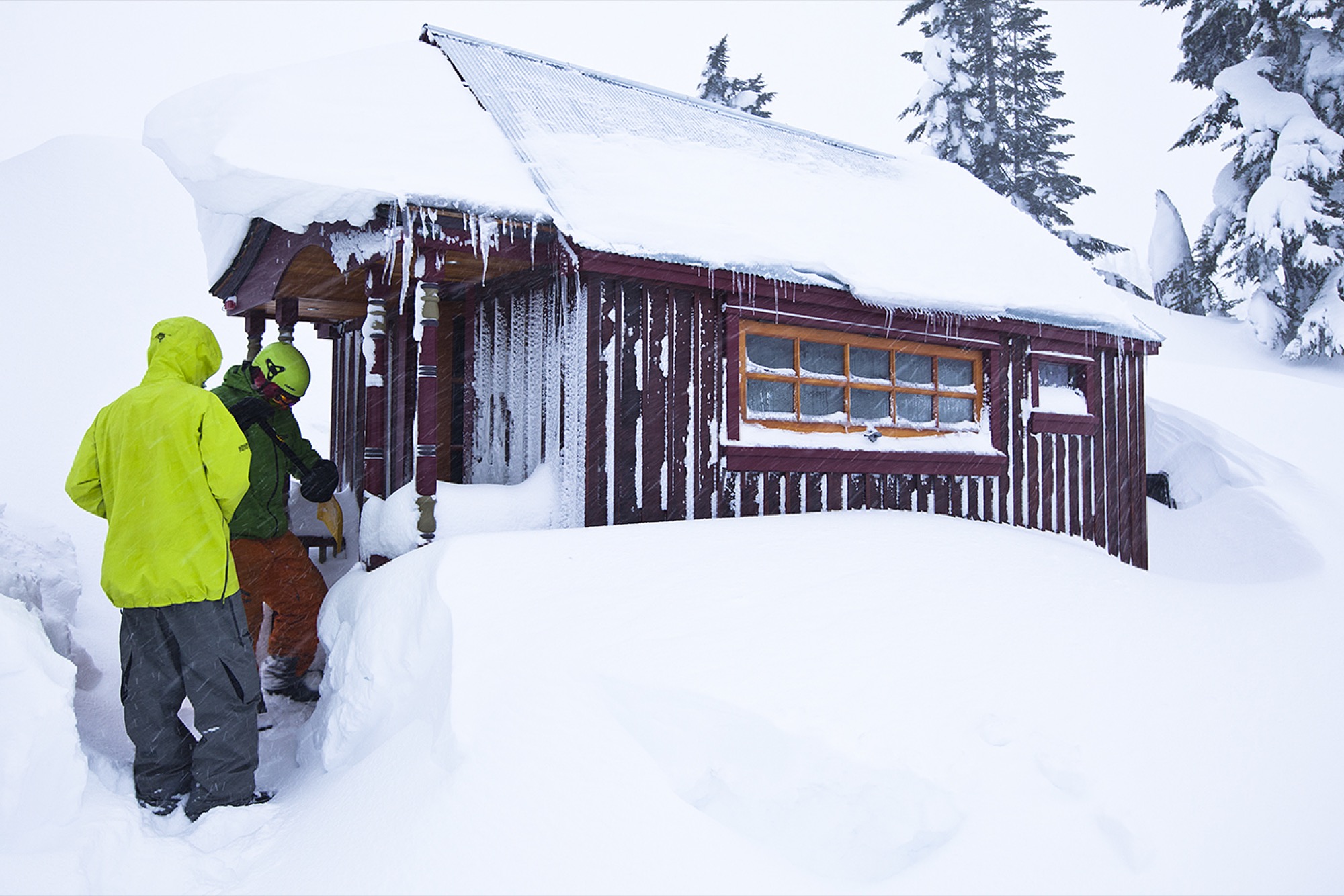
So he built a 112-square-foot (10-square-meter) tiny house on wheels for Baker and himself. It became more than a vehicle to keep living expenses low. Giffin once again owned a place he wanted to come home to and could take pride in. “It’s human nature. It’s a disorienting feeling to be out there, floating around, and not have this idea of where home is,” he says. “With a tiny house, you can provide that for yourself with a lot less money and without this ridiculous classist stigma.”
Looking back on how differently people reacted to his RV or van compared with the tiny house, Giffin is astounded. “I would park my RV at a friend’s, and the neighbor would come over within a day, asking me how long it’s going to be there,” he remembers. “Now, the neighbors still come over. But now they want a tour. They want to meet the person who’s built such a cool thing.”
“No girl wants to go back to her parents and explain that her new boyfriend actually lives in a van.”
Returning time, restoring pride
Keen on helping others feel that sense of pride, Giffin, in his mid-thirties, now builds tiny houses all across the country on his television show Tiny House Nation. The movement hits a nerve with the nation. Along with irrepressible concerns about the environment and the economy, Giffin senses a growing disdain for global materialism, amplified in increasing average home sizes. Living minimally speaks to all those fears. “I see that pendulum swinging back in the tiny house movement.”
He passionately wants to help people get out of the trap of imbalanced wages versus home prices. “So many people in my generation are going through school and have all these dreams and passions, and then economic reality forces them into jobs that have nothing to do with what they studied,” he says. “As time goes on, that turns into their reality, and hopes get left behind.”
Leaving behind material things and abundant living space instead of dreams, on the other hand, has one tremendous reward: returned time. “I love to watch people make that transition, because it’s not just about the physical detachment from the things that were controlling your life, it’s also this big decision that takes a lot of courage. And you can be so proud of yourself for making it through to the other side.”
Free-skier
Freedom from being forced to work longer hours to afford a bigger house is one important appeal of tiny-house living. The other one is mobility. When Giffin is not filming, he pulls his ski chalet on wheels right up to the mountain. “The desire to wake up where your next adventure is, this immediacy, is a universal understanding within the ski culture,” he says. “With skiing, half of the process is the commute. Only unbelievably rich people get to stay right at the mountain.”
Or, you’re living in the parking lot.
“The desire to wake up where your next adventure is, this immediacy, is a universal understanding within the ski culture.”
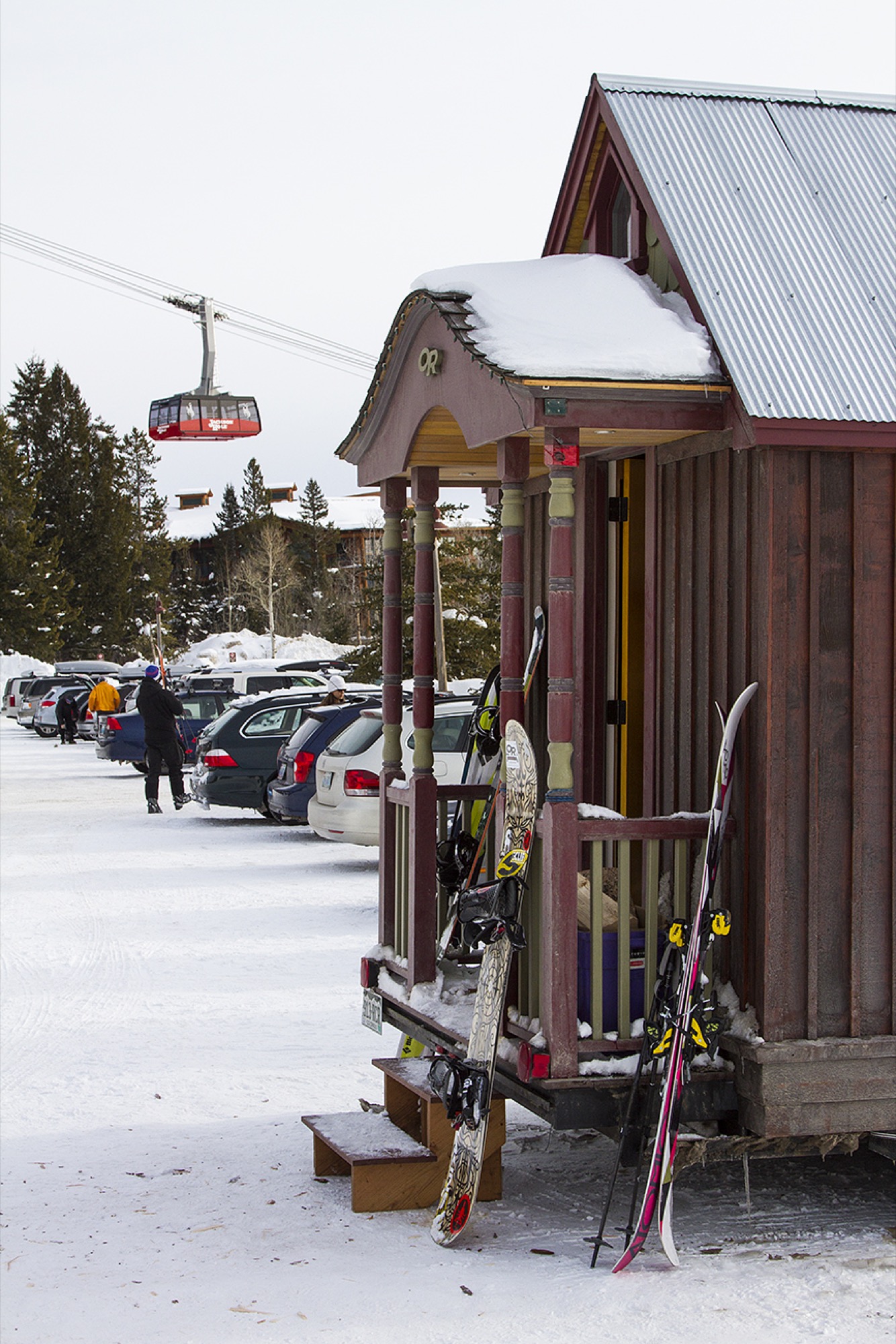
Giffin values being on the mountain before anyone else, and, at the end of the day, not being stuck in traffic, sitting in the car in his wet gear. Instead, he skis right up to the place he calls home. “One of the most beautiful things about tiny-house living are these incredibly romantic situations. You’re collecting all these little tidbits of extra time. It’s the end of a beautiful ski day, and it’s such a satisfying feeling to be in a place you love, that feels like home, and that’s in the mountains. But you have to fill that time or you are going to experience this crazy thing called boredom. And that’s just beautiful. It turns into my time for reading books, stretching, playing guitar, and having intense conversations with Molly . . . or a dance party. All these things lead into a quality of life worth living for.” △
“One of the most beautiful things about tiny-house living are these incredibly romantic situations. You’re collecting all these little tidbits of extra time.”
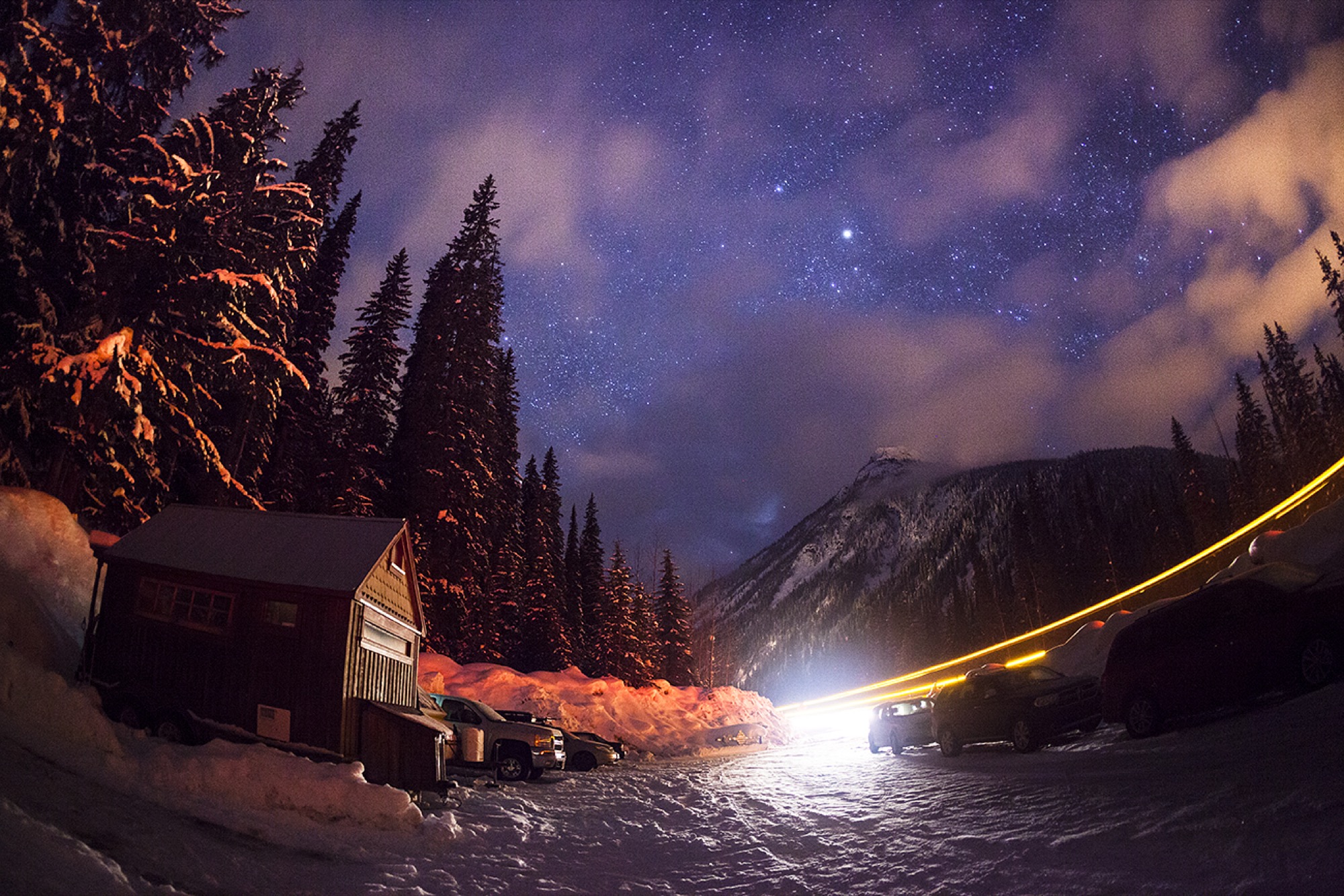
This story was originally published in winter 2014/15, in our printed Alpine Modern quarterly.
Summer Graze
Can you hear the sound of moo-sic? During summer, the von Trapp family grazes cows and other farm animals on their nordic ski slopes in Vermont for sustainable land management
Decades ago, Maria and Captain Georg von Trapp inspired the musical The Sound of Music. Now settled in northern Vermont, the family’s younger generations practice sustainable land management that ski resorts around the world have been experimenting with for decades: Cows, sheep, goats, and other grazers savor their summer meals on winter-sports land.
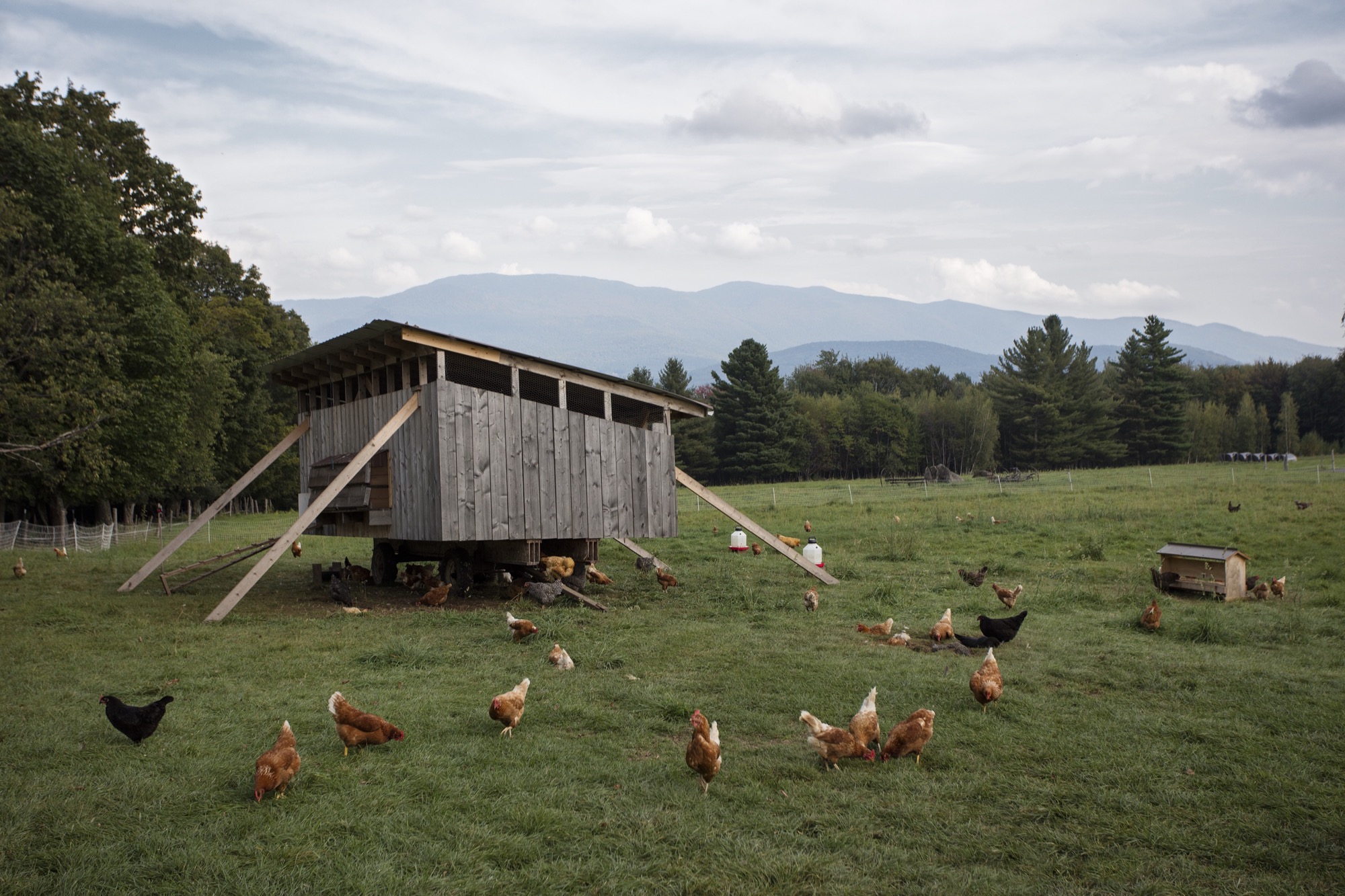
It’s an overcast afternoon at the Trapp Family Lodge in northern Vermont, and out in the Wedding Meadow, 150 chickens are taking in the views of Worcester Range spread out behind the bright-white event tents. Twenty-one sheep are enjoying a snack in front of the Austrian-style villas, half a dozen pigs are patrolling Luce Trail, and over by the practice meadow, sixty-five Scottish Highland cows with shaggy bangs and gentle eyes are trotting for cover as the sky cracks open into a midsummer storm.
Balance of system
Appearances to the contrary, this is not an alpine sequel to Animal Farm in which barnyard creatures seize the ski industry. Rather, the scene depicts new developments in an approach to sustainable land management that ski resorts around the world have been experimenting with for decades. The idea is to combine agriculture and recreation in a way that benefits farmers, resort operators, and tourists alike. When animals graze on ski slopes, fewer resources go into mowing, summer visitors get a brush with rustic mountain life, and cows, sheep, and other animals get access to the alpine plants that produce some of the tastiest cheese and meat imaginable.
“They benefit, we benefit,” says Patrick Bliss, the tanned and goateed Vermont native who has served as property manager at the Trapp Family Lodge for seven years and head turkey-herder, pig procurer, and chicken caretaker for two.
“They benefit, we benefit.”
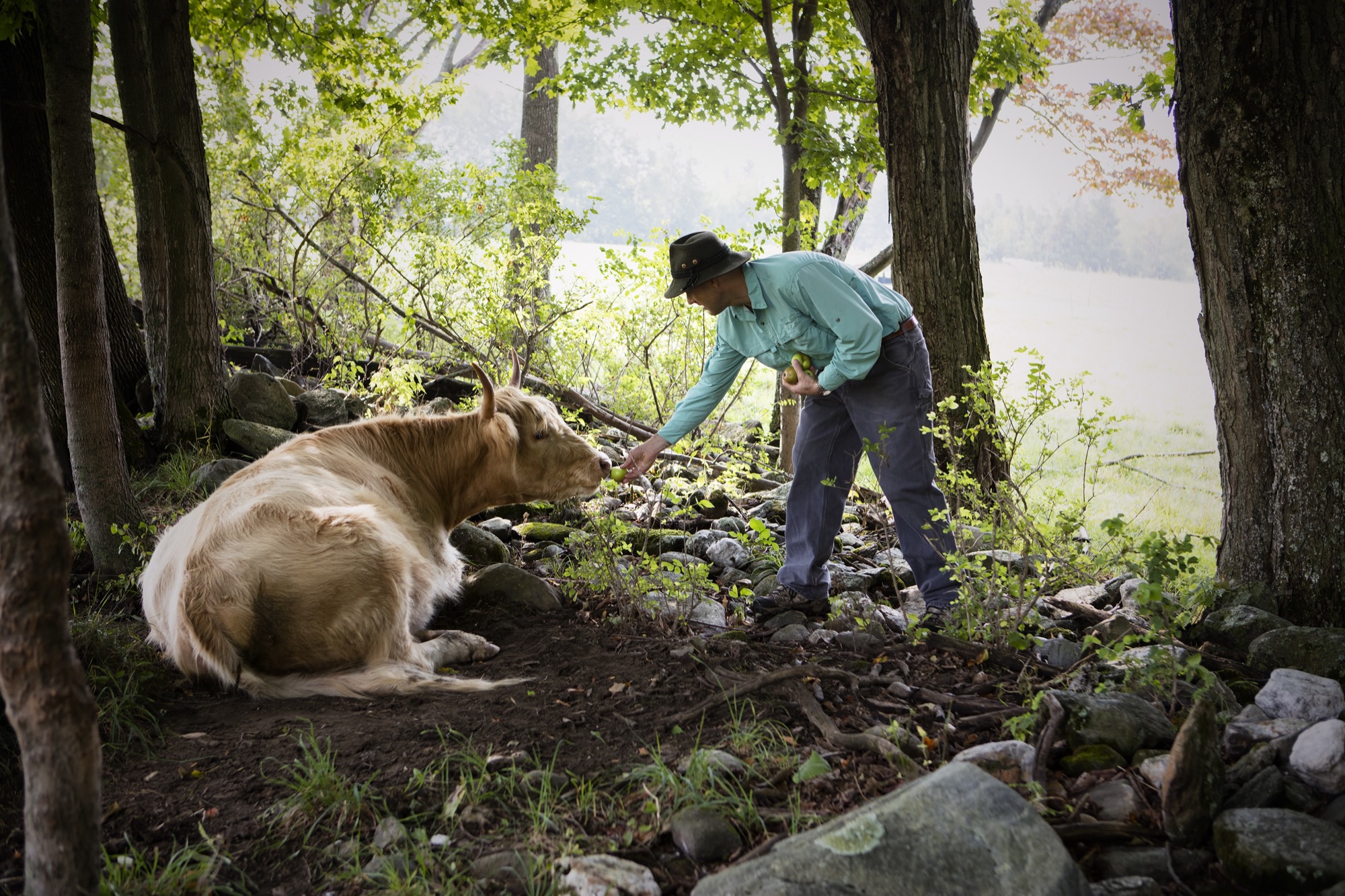
The Sound of music—where are they now?
The 2,500-acre (ca. 1,012-hectare) resort he tends is drawing attention for its innovative use of animals, but it also happens to be one of the most storied ski lodges in North America. Johannes von Trapp, who today runs the resort with his son Sam, daughter Kristina, and son-in-law Walter Frame, is the son of Maria and Captain Georg von Trapp, the real-life couple who inspired The Sound of Music. Most musical fans know that the family of singers fled Europe to escape Nazi persecution in the 1930s; fewer realize they made their new home on a verdant mountainside in Stowe, Vermont, and later opened an Austrian-style ski resort there.
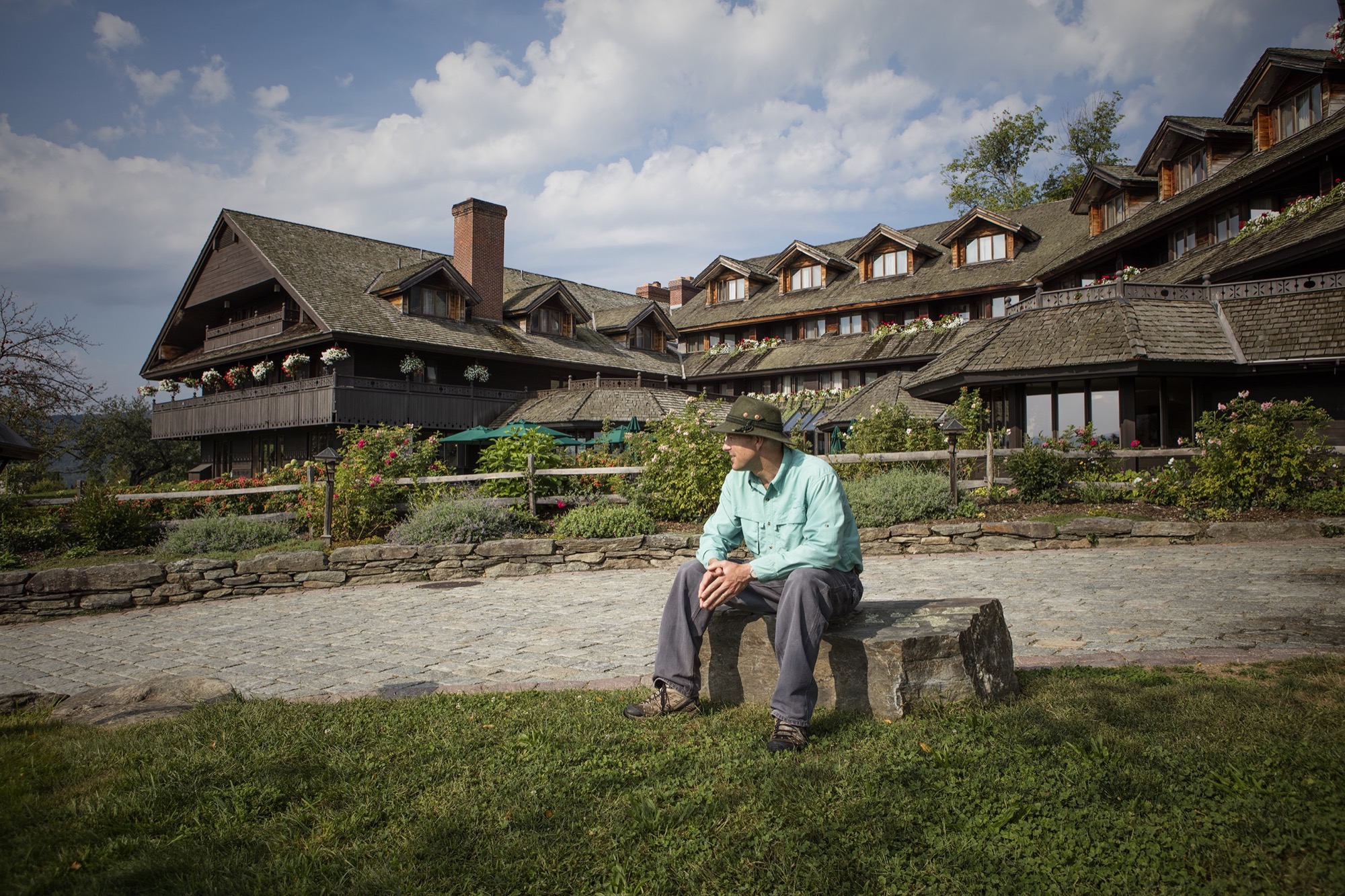
For years, Johannes kept cattle on the land as a hobby, but in 2013 the family took a cue from their state’s thriving farm-to-table movement and decided to experiment with pigs, chickens, turkeys, and sheep as well. Today, meat and eggs from the grass-fed animals go into bratwurst, sauerbraten, and other special dishes served in the dining room, much to the delight of guests. The family hopes to expand its herds in coming years, Bliss says.
Long-standing practice in the European Alps
Though the project has few parallels in the U.S., it would hardly raise an eyebrow in the European Alps where the von Trapp family once lived.
“Most of the ski areas in Europe were predated by other uses of the forest, in many cases farming,” says Michael Berry, president of the National Ski Areas Association, which represents 350 U.S. ski area owners and operators.
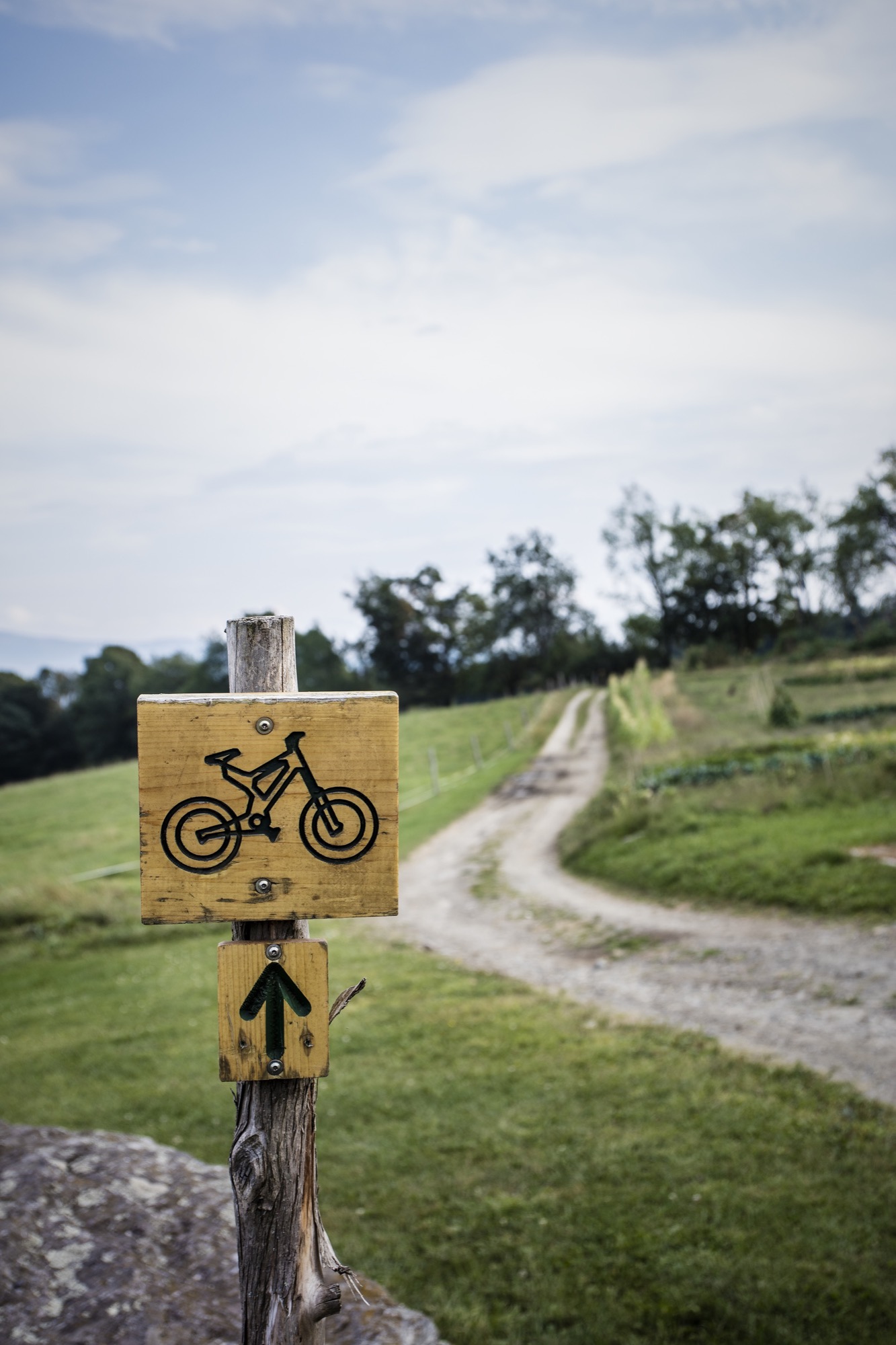
Mountain farmers raised small herds of dairy cows or goats (think Heidi) and transformed their milk into alpine cheeses like Gruyère and fontina. As skiing became increasingly popular throughout the twentieth century, however, resorts displaced some of these farms and damaged the fragile mountain ecosystems surrounding them. Road and slope construction caused erosion, artificial snow froze spring growth, and development brought its usual cascade of concrete and cars to quiet mountain villages.
But in other cases, farmers worked out a fruitful coexistence with their new neighbors. They leased pastures to ski operators in winter, or even became part owners of resorts themselves. The income from these arrangements gave them a way to maintain their traditional farms. “It’s a fascinating balance of two realities,” says Berry.
“It’s a fascinating balance of two realities.”
One place where this model thrives is the Swiss ski resort of Gstaad. The tony alpine village is home to dozens of celebrities (including Julie Andrews, of The Sound of Music fame), but also to 7,000 Simmentaler cows, who saunter past the designer boutiques each summer with bells on their necks and crowns of flowers on their heads, bound for ski slope pastures. Farmers boil their milk in copper kettles to make Berner Hobelkäse, a hard slicing cheese.
Importing an idea
The balance between agriculture and alpine recreation has proven trickier in North America, with its very different history and ecology. “Not to say their interests are mutually exclusive, but although the ski areas create pastureland, generally the compatibility of the two activities is not seen as beneficial,” says Berry.
One problem is that permits for grazing typically do not overlap with permits for ski use, especially in western states where resorts often operate on Forest Service land. The two types of permits come with different rules for water quality, erosion, and other environmental impacts. The recent boom in summer recreation at ski resorts (the result of new legislation allowing more off-season use) poses another challenge.
Whether the reason lies in these obstacles, or simply in the added complications that animals entail, grazing hasn’t taken hold in a big way on slopes outside of Europe. Big Rock Ski Area in Maine, Killington Resort in Vermont, and The Canyons, in Utah, all launched and then discontinued programs. In Japan, Australian snowboard-photographer-turned-farmer Rob Alexander grazed goats on a ski slope in Nagano, attracting copious media attention, but shut down the business in 2014.
One program that hasn’t fizzled out is at Vancouver’s Sun Peaks Ski Resort, which since its founding in 1962 has shared 4,000 alpine acres with local ranchers. Today 400 beef cattle graze all the alpine bowls up to the summit, says slopes manager Seth Worthen. Keeping them out of the village requires six miles of electric fencing, but Worthen says the effort of installing it each year is worthwhile. “It keeps the grass mowed down and the brush from encroaching onto the ski runs,” he says. That cuts diesel and gas use by about a quarter.
Bliss hopes to soon reap similar savings on the Trapp Family Lodge’s backcountry slopes. So far, the animals have stayed on the lower-elevation cross-country courses, but two years ago his team cleared twenty acres of steep forested land for more adventurous skiers. Keeping them sapling-free requires “hand-to-hand combat” by a team of five chain-saw-wielding men, Bliss says, since the tree stumps rule out tractor use. Sheep, on the other hand, “will pick a stump clean.”
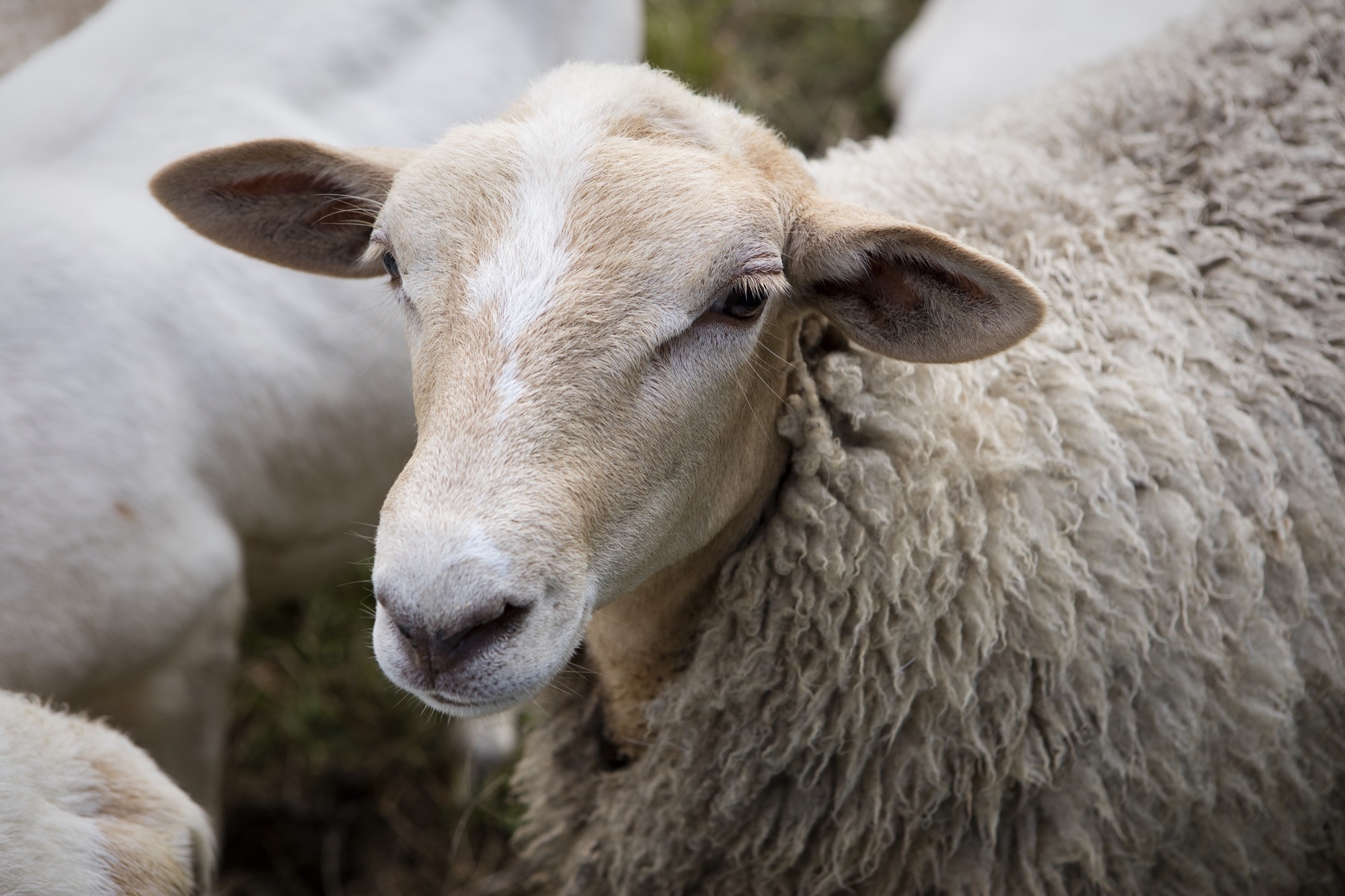
To that end, Sam von Trapp is raising a flock of Katahdin sheep that he hopes to move onto the land next year. Originally bred to clear brush under power lines, the sheep are famously un-picky eaters, turn foliage into protein with great efficiency, and require little care aside from guarding against predators.
The project promises to add yet another layer to an already complex system. For Bliss, managing that system has been challenging but hugely rewarding. “It’s not just about farm-to-table, but how to fit it into the resort setting, which is tricky,” he says. “We’re under a microscope, but at the end of the day, that’s the best for the animals.” If the system proves equally beneficial for the owners of those animals, other ski area operators in the United States just may start to take notice. △
